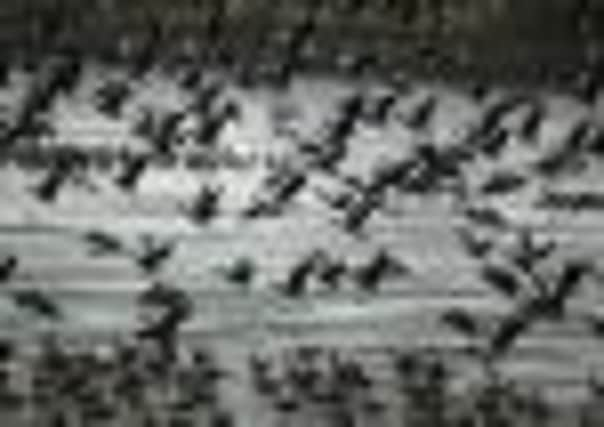Outdoors: The Montrose Basin


It is one of the finest examples of an enclosed estuarine basin in the UK and its sediments bear evidence of a tsunami that crashed into the east coast of Scotland thousands of years ago. It was also once home to important mussel and wild salmon fisheries, but today the Montrose Basin is probably best known for its huge congregations of geese, ducks and waders.
At around 750 hectares in area, it really is one of Scotland’s most remarkable natural sites; a place of distant horizons and vast skies, which at dusk are filled with the distinctive calls of tens of thousands of pink-footed geese settling down to roost for the night. In this unique environment, mindboggling numbers of creatures occur at all levels of the food chain, ranging from the tiny hydrobia snails that live in the glutinous mud – there can be over three million in a cubic metre – to the huge flocks of wildfowl and wading birds that occur in autumn and winter.
Advertisement
Hide AdRelatively undeveloped compared to many of our other estuaries, the Montrose Basin is now a Local Nature Reserve owned by the Scottish Wildlife Trust (SWT), and which has also been designated a Site of Special Scientific Interest and a Special Area of Conservation. Fed by the River South Esk, one of Scotland’s finest salmon and trout rivers, the Montrose Basin also features significant areas of saltmarsh that supports unusual communities of salt-tolerant plants.
It is easy to understand, therefore, why it has Anna Cheshier, Montrose Basin ranger for SWT, under its spell. One of her highlights are the massive flocks of pink-footed geese in autumn and early winter. “Huge numbers fly in from their feeding grounds on the surrounding farmlands in the evening to roost in the basin,” she says. “The peak is in October when up to 65,000 birds have been recorded in recent years and the geese are attracted to the basin because it is a safe place to spend the night,” she says.
There has been a dramatic increase in the number of pink-foots arriving at Montrose in recent decades, which has been aided by improved productivity on their summer breeding grounds in Iceland and Greenland. By November the population starts to dwindle, with many of the birds heading to wintering grounds further south in areas such as Norfolk and Suffolk. However, even in November there will be up to 25,000 pink-foots present, and because of the longer nights, the geese try to maximise their daytime feeding opportunities by arriving and departing at the basin over a very short period of time, resulting in the sky being suddenly full of the birds at dawn and dusk.
“It really is spectacular,” says Anna. “In November, these pink-foots can be joined by up to a couple of thousand greylag geese, which all adds to the occasion.”
Also of huge conservation interest are the waders that spend the winter on the basin, including oystercatchers, knots, redshanks and dunlins. The place is great for ducks too, with one of the specialities being wigeon attracted by the prolific beds of eelgrass (Zostera). There were around 3,000 wigeon on the reserve last winter and shelducks and eider ducks are also numerous.
The Montrose Basin is hugely attractive to these wildfowl because the salty estuarine water caused by the regular flushing of the tides doesn’t freeze over in winter, enabling virtual round-the-clock feeding opportunities. This anti-freeze effect of the tides is also good news for wintering kingfishers attracted by the abundance of small fish.
Advertisement
Hide AdThe Montrose Basin has the capacity to continually throw up surprises, such as the three spoonbills that spent much of last summer in the area. But despite this diversity, it will always be the geese that are destined for the starring role.
“I love to watch the geese coming in to roost during the evening and listening to their calls and the rushing noise of their wings,” says Anna.
Advertisement
Hide Ad“I never cease to be amazed by how they all time their departure from their feeding grounds to arrive at the basin at the same time,” she says.
The Scottish Wildlife Trust has a four-star visitor centre at Montrose Basin and excellent views of birds and other wildlife can be obtained from the four hides on the reserve.